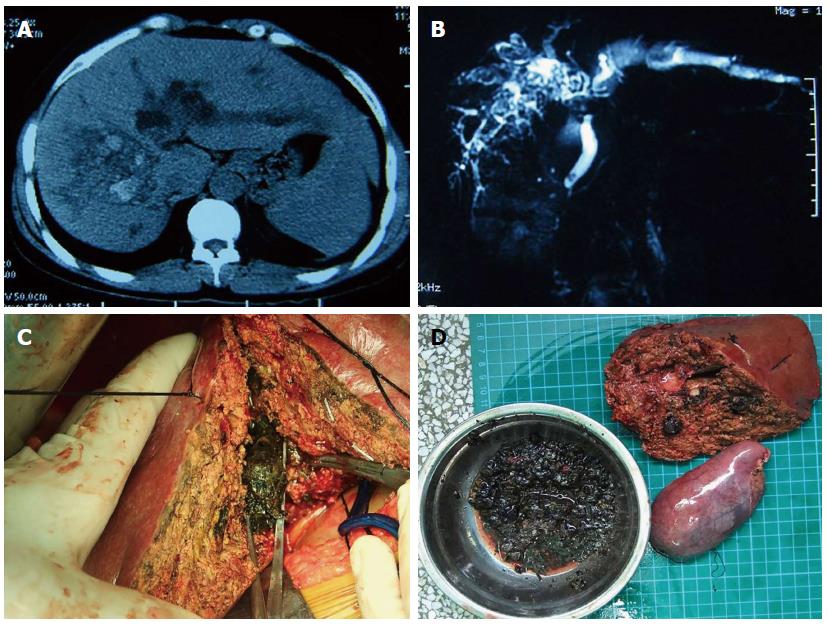Copyright
©The Author(s) 2015.
World J Gastroenterol. Feb 21, 2015; 21(7): 2169-2177
Published online Feb 21, 2015. doi: 10.3748/wjg.v21.i7.2169
Published online Feb 21, 2015. doi: 10.3748/wjg.v21.i7.2169
Figure 1 Primary type of pathological evolution-based classification for hepatolithiasis.
A: Computed tomography showed that calculi were located within the right posterior lobe of the liver and dilation of the biliary tract within the liver; B: Magnetic resonance cholangiopancreatography showed dilation of the biliary tract and a negative calculi signal within the dilated tract; C: Operative imaging showed that a large amount of hepatolithiasis was removed surgically; D: Postoperative imaging showed calculi (in kidney basin) and specimens including gallbladder and posterior hepatic lobe, which were removed surgically.
- Citation: Liu FB, Yu XJ, Wang GB, Zhao YJ, Xie K, Huang F, Cheng JM, Wu XR, Liang CJ, Geng XP. Preliminary study of a new pathological evolution-based clinical hepatolithiasis classification. World J Gastroenterol 2015; 21(7): 2169-2177
- URL: https://www.wjgnet.com/1007-9327/full/v21/i7/2169.htm
- DOI: https://dx.doi.org/10.3748/wjg.v21.i7.2169









